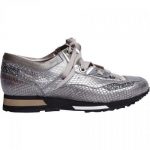Shoes have come a long way from their humble origins as foot coverings to protect against the elements. Today, they are not only a functional necessity but also a powerful fashion statement. In this comprehensive article, we will explore the evolving world of shoe styles, with a special focus on the application of 3D printing and smart technology in the footwear industry. From customized designs to intelligent wearables, the future of shoes is a fascinating journey into innovation and fashion.
Introduction
Shoes are not merely accessories to our daily attire; they are a reflection of our personality, culture, and lifestyle. Over the years, the world of shoe styles has witnessed remarkable transformations, driven by advancements in technology, materials, and design. Now, the convergence of 3D printing and smart technology promises to revolutionize the way we think about and wear shoes.
The Evolution of Shoe Styles
To understand the future of shoes, it’s essential to first look at how shoe styles have evolved through the ages. From ancient sandals to modern sneakers, here’s a brief overview of the history of shoes:
Ancient Footwear
The history of shoes dates back to ancient times when our ancestors fashioned rudimentary coverings from plant materials, animal hides, and other natural resources. Sandals made from woven reeds and leather were some of the earliest forms of footwear. These simple designs served the primary purpose of foot protection.
Medieval and Renaissance Footwear
As societies advanced, so did the complexity of shoe styles. In the Middle Ages and the Renaissance period, footwear became an indicator of social status. Royalty and nobility wore elaborate, often impractical shoes to signify their wealth and power. The infamous “poulaine” shoes, with their long, pointed toes, are a prime example of this trend.
Industrial Revolution and Mass Production
The Industrial Revolution in the 18th century marked a significant shift in the shoe industry. The invention of machinery, such as the sewing machine, allowed for the mass production of shoes. This made footwear more accessible to the general population, leading to the emergence of standard shoe sizes and styles.
20th Century Innovations
The 20th century brought a wave of innovation in shoe design. Sneakers, initially created for sports and athletics, became a cultural phenomenon. High heels, platform shoes, and various other experimental designs captured the imagination of fashion enthusiasts. The latter part of the century saw the rise of sneaker culture, with iconic brands like Nike and Adidas leading the way.
The Current State of Shoe Technology
Before delving into the future of shoes, let’s take a closer look at the state of shoe technology today. Several trends and developments are shaping the footwear industry:
Sustainable Materials
As environmental consciousness grows, many shoe manufacturers are shifting toward sustainable materials. Recycled plastics, organic fabrics, and eco-friendly production methods are becoming the norm in an effort to reduce the industry’s environmental footprint.
Customization
Personalization is a significant trend in the shoe industry. Brands like Adidas and Nike offer customers the option to design their own sneakers, choosing colors, materials, and even adding personalized text or graphics. This trend is transforming the shoe-buying experience, with consumers valuing unique, made-to-order designs.
3D Printing in Shoe Manufacturing
3D printing has made a significant impact on the footwear industry. It allows for precise and efficient production of shoe components, leading to reduced waste and faster prototyping. The technology also enables complex and intricate designs that were previously challenging to achieve through traditional manufacturing methods.
Smart Footwear
Smart technology is making its way into our shoes. Smart footwear includes features like fitness tracking, temperature control, and even self-lacing mechanisms. Brands like Nike and Under Armour have introduced smart shoes that can connect to smartphones, providing wearers with real-time data on their activity and performance.
3D Printing in Shoe Manufacturing
One of the most exciting developments in the world of shoes is the integration of 3D printing in manufacturing processes. 3D printing, also known as additive manufacturing, offers several benefits for the production of footwear:
Customization
3D printing allows for unparalleled customization. Footwear companies can create shoes that are tailored to an individual’s unique foot shape and size. This not only enhances comfort but also reduces the risk of foot-related issues.
Reduced Waste
Traditional shoe manufacturing often results in significant material wastage. In contrast, 3D printing is an additive process that minimizes waste. Manufacturers can produce shoe components with precision, using only the necessary amount of material.
Rapid Prototyping
Prototyping is a critical phase in shoe design. With 3D printing, designers can quickly create and test prototypes, making it easier to iterate and refine their designs. This accelerates the development process and brings innovative concepts to market faster.
Complex Geometries
3D printing allows for the creation of complex and intricate geometries that were previously unattainable through traditional manufacturing. This opens up new possibilities for shoe design, enabling structures and patterns that enhance both aesthetics and functionality.
On-Demand Production
The on-demand nature of 3D printing means that manufacturers can produce shoes as they are ordered. This reduces the need for large inventories, lowers storage costs, and minimizes overproduction.
Smart Technology in Footwear
Smart technology is another exciting frontier in the footwear industry. Smart shoes combine fashion and function, offering features that enhance comfort, performance, and connectivity. Here are some key areas where smart technology is making an impact:
Fitness Tracking
Smart shoes equipped with sensors can monitor various metrics, including steps taken, distance traveled, and even posture. This data can be synced with a smartphone app, providing wearers with insights into their physical activity.
Temperature Control
Some smart shoes include heating or cooling elements that can be controlled through a mobile app. This feature is particularly appealing in regions with extreme climates.
Self-Lacing Shoes
Inspired by science fiction, self-lacing shoes have become a reality. Brands like Nike have introduced self-lacing technology that adapts to the wearer’s foot shape and provides a secure fit.
Navigation and Location Services
Smart shoes can incorporate GPS and location tracking, providing wearers with directions and navigation assistance. This is particularly useful for outdoor activities and urban exploration.
Health Monitoring
Advanced smart shoes can monitor health-related data, such as heart rate and body temperature. This information can be shared with healthcare professionals for remote health monitoring.
App Integration
Smart shoes can connect with smartphone apps, allowing wearers to control various features and receive real-time updates on their footwear’s performance.
The Future of Shoes: A Blend of 3D Printing and Smart Technology
The future of shoes is an exciting amalgamation of 3D printing and smart technology. Here are some possibilities and trends that we can expect to see:
Personalized 3D-Printed Shoes
Imagine ordering a pair of shoes that are custom-designed to match your foot shape perfectly. 3D printing technology will enable footwear manufacturers to create personalized shoes that provide an unparalleled level of comfort and support. This customization will extend beyond fit to include design, color, and even embedded smart features.
Enhanced Comfort and Performance
Smart technology will continue to enhance the comfort and performance of shoes. We can anticipate advanced cushioning systems, adaptive materials, and real-time feedback on gait and posture. Smart insoles will become a common accessory, providing wearers with valuable insights into their physical well-being and helping prevent injuries.
Sustainability in Shoe Production
The growing concern for the environment will push the footwear industry towards even more sustainable practices. 3D printing, with its reduced material waste, will play a crucial role in sustainable shoe production. Manufacturers will explore eco-friendly materials for 3D printing, further minimizing the environmental impact of the shoe manufacturing process.
Smart Fashion Statements
As smart technology becomes more integrated into our daily lives, smart shoes will transition from being a novelty to a fashion statement. Brands will collaborate with designers to create visually appealing, tech-infused footwear that seamlessly blends fashion and function. These smart shoes will be more than just gadgets; they will be pieces of wearable art.
Connectivity and Interactivity
In the future, smart shoes will not operate in isolation. They will be part of an interconnected ecosystem, communicating with other wearable devices and smart homes. For instance, your shoes could provide feedback to your smartwatch about your posture, and your smart home could adjust the room temperature based on your footwear’s temperature control settings.
Healthcare and Wellness
Smart shoes will become integral to the healthcare and wellness industry. They will help individuals monitor their health, track their physical activity, and prevent common foot-related problems. Physicians will use data from smart shoes to make better-informed decisions about their patients’ health.
The Role of Artificial Intelligence
Artificial intelligence (AI) will play a significant role in the development of future shoes. AI algorithms will analyze data from smart shoes to provide personalized recommendations, such as suggesting shoe adjustments to improve posture or gait. AI-driven design tools will assist designers in creating shoes that offer optimal comfort and performance.
3D Printing at Home
With the advancement of consumer-grade 3D printers, there may come a time when individuals can design and print their own custom shoes at home. This democratization of 3D printing technology could revolutionize the way we think about and acquire footwear, putting the power of design and production in the hands of consumers.
Challenges and Considerations
While the future of shoes holds great promise, there are several challenges and considerations to address:
Accessibility and Affordability
As with any new technology, the initial cost of 3D-printed and smart shoes may be prohibitive for some. Ensuring that these innovations become accessible and affordable to a wide range of consumers will be essential for their widespread adoption.
Data Privacy and Security
Smart shoes collect a significant amount of personal data. Protecting this data from cyber threats and ensuring the privacy of the wearer will be a paramount concern. Manufacturers will need to invest in robust security measures and transparent data practices.
Sustainability and Ethical Production
The shift toward 3D printing and smart technology should not come at the expense of ethical and sustainable manufacturing practices. Ensuring that the materials used are eco-friendly and that workers are treated fairly in the production process will remain important.
Conclusion
The future of shoes is an exciting intersection of technology, fashion, and functionality. 3D printing and smart technology are poised to transform the way we design, produce, and wear footwear. From custom-tailored 3D-printed shoes that offer unrivaled comfort to smart shoes that monitor our health and enhance our daily lives, the possibilities are boundless.
As we embrace these innovations, it’s crucial to address the challenges and ethical considerations that come with them. Ensuring that the future of shoes is sustainable, accessible, and secure is essential for creating a world where everyone can step into a better, more connected, and stylish future.
The shoe industry’s journey into the future is not just about fashion but also about how technology can serve us in our everyday lives, from enhancing our health and well-being to reducing our environmental footprint. As we lace up our smart, 3D-printed shoes, we step into a world where the possibilities are as limitless as our imagination.
















Add Comment